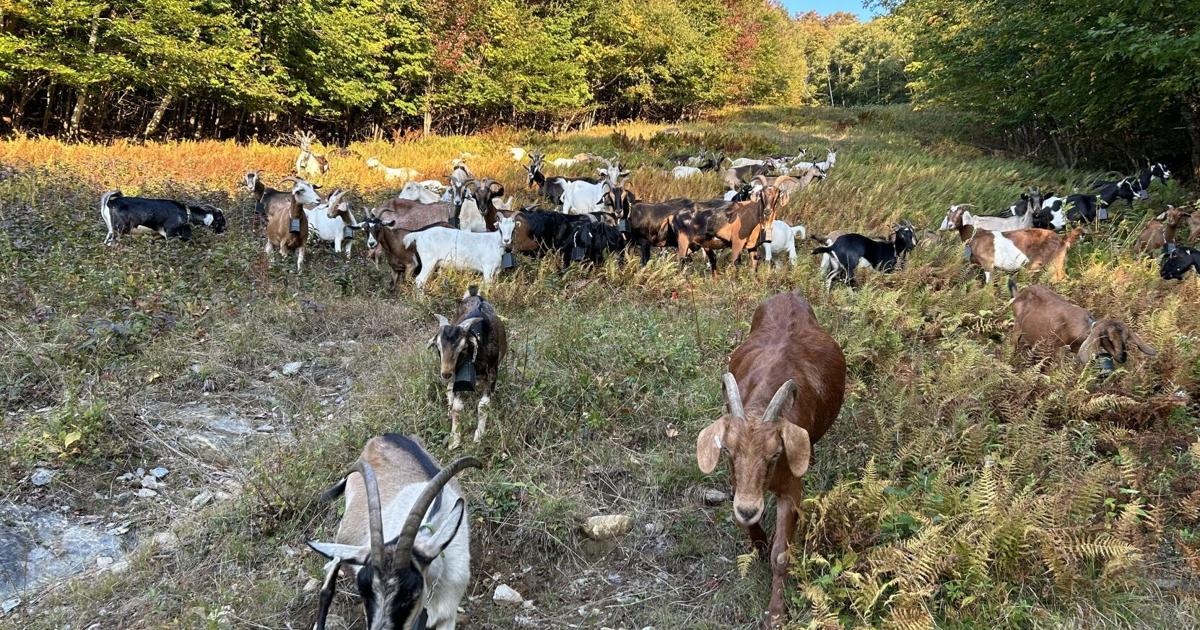The Innovative Use of Goats at Magic Mountain Ski Area
Introduction to Grazing Goats
At Magic Mountain Ski Area in Londonderry, Vermont, a new approach to vegetation management is taking place—one that involves a herd of goats. For the past month, these goats have been deployed to graze in spots on the mountain that are difficult or even impossible to mow. Aimee Braxmeier, the owner of Slippery Slope Goats LLC, has spearheaded this initiative, leveraging her extensive background in both agriculture and the ski industry.
Aimee’s Journey: From Ski Lifts to Goat Herds
Braxmeier’s journey was born from her experiences managing a goat dairy farm in Vermont. She recognized a growing demand from homeowners seeking natural solutions for invasive plant species and other landscaping needs. "I was like, I think we’re onto something here, so I quit my job," she recalled. This pivotal decision was significant, marking her return to her roots after a successful career as the lift operations manager at Stratton Mountain Resort.
With ambitions to scale up her operations, Braxmeier invested heavily in her business by purchasing a herd of 30 pregnant goats from New York. This move quickly multiplied her stock, growing from 50 to 150 goats in just a few months when the herd welcomed a large number of kids.
Cutting-Edge Technology: Virtual Pastures
Braxmeier’s venture isn’t just about traditional grazing; she’s embracing modern technology. In collaboration with the Agritech Institute for Small Farms, she’s introduced a revolutionary collar system that allows for the creation of “virtual pastures.” Each goat wears a collar equipped with a SIM card, solar panels, and a battery, allowing Braxmeier to monitor their movements and grazing habits directly from her smartphone.
This technology allows her to track the herd’s location and manage grazing areas without physical fencing—an innovation that greatly reduces the labor involved in traditional grazing methods. Previously, Braxmeier had to rely on electric net fencing, which was cumbersome and labor-intensive. She described the work as "super labor intensive," involving the regular moving of fencing and carrying heavy equipment around.
How the Collar System Works
The collar technology functions similarly to an electric fence, where the goats receive a warning as they approach the boundaries of their designated grazing area. Braxmeier explained that the collars emit a series of tones, leading up to a mild zap if they move beyond the set boundaries. Importantly, once they escape, they are motivated to return quickly, since they need to stay with their herd.
The collars are equipped with data-gathering features that log each goat’s activity levels. For instance, the technology can inform Braxmeier if a goat hasn’t moved for an extended period, indicating potential health issues. Such insights are crucial in maintaining the health and welfare of the herd.
Collaboration and Support
Braxmeier’s efforts at Magic Mountain weren’t made in isolation. The collaboration with the Agritech Institute has been pivotal, with the organization seeking to identify and promote agriculture technologies that benefit small farms. Under the guidance of Dan Smith, the executive director, the project aims to not only support Braxmeier’s venture but also promote a sustainable model that can be replicated across various landscapes.
Funding from multiple sources, including state legislators and agricultural innovation centers, has enabled Smith and Braxmeier to test this technology effectively. While challenges remain—namely, ensuring adequate cellular service in rural areas—the initial results have shown promise. Smith remarked on the system’s potential to transform how small farms manage livestock and land, paving new ways for sustainable agriculture.
Future Aspirations and Growth
As Braxmeier looks ahead, she plans to expand not only her herd but also the scope of her services. She has begun clearing invasive plants off private lands and is exploring opportunities to assist public utilities in Vermont. With ambitions to hire staff and collaborate further with the Vermont Farm & Forest Viability Program, the future appears bright for Slippery Slope Goats.
Braxmeier’s story demonstrates the power of innovating within traditional practices. By marrying agriculture with technology and seeking sustainable solutions, she embodies a modern approach to land management and eco-friendly practices. The use of grazing goats at ski resorts and other public spaces stands as a testament to the evolving narrative of farming in contemporary society.
